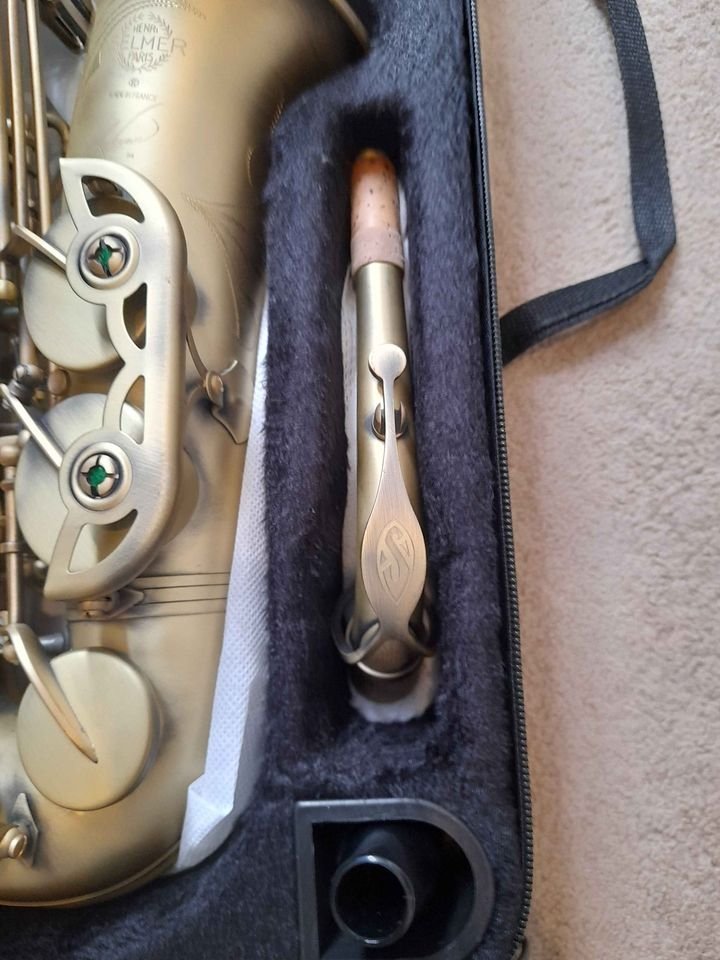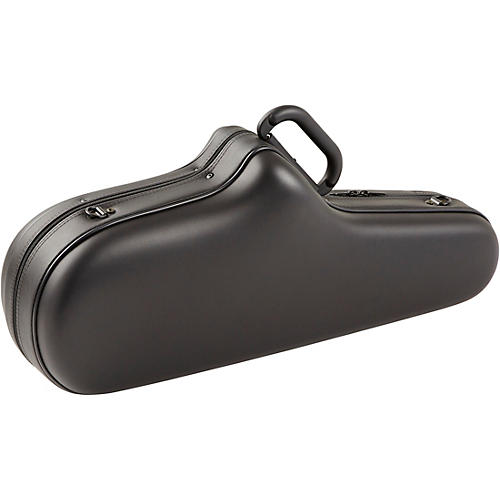

So those of you who wish to keep using your ergonomic neck screws will find it difficult if not impossible. Instead, the lyre unit is located on the body of the instrument. Unlike other Selmer models, the lyre housing is not located at the same location next to the neck screw. There are small differences with the design of the octave thumb key. I did notice little differences with the Axos. The low Eb and C keys were in proper alignment allowing for smooth operation although I noticed that the left and right-hand table keys were flatter than most Selmers I’ve encountered. I was pleased that the palm keys fit my hand but were not so large as to be an issue for those with smaller hands. The keys fit my larger hands well, especially the left-hand palm keys. The keywork of the Axos is well designed, offering a comfortable and ergonomic feel. All this being said, I had no significant issues adjusting to the instrument, and once I was ready to take the Axos into performance situations, found it not to be an issue at all. A lack of resistance and ease of response can sometimes come at the sacrifice of pitch stability. Again, this could have something to do with a difference in neck bore or taper. I found the upper register to play a bit sharp, yet I found the middle C# to be noticeably flatter than on my instrument. Coming from a Yanagisawa WO 10 I found the pitch to be good but not as dialed in as I would like. Where I appreciated the ease of response, I felt this also led to some pitch instability. I was able to access a variety of tonal colors without much adjustment. The response of the Axos was immediate and offered very little resistance.
#Selmer reference 54 freview series#
The sound has the vastness of Series II but with a tighter core than the Series II or III. The tonal footprint is unmistakably Selmer, with a sound this is reminiscent of the Series II but with greater ease of response and clearer projection. I have to say that I was pleasantly surprised by the Axos. Regardless of location or reason, it was articulated to me that all steps in the manufacturing process are under Selmer control and oversight. Additionally, there is still a stigma that exists about some locations of manufacturing. I can only assume that this outsourcing has something to do with a lower price point (more on that later), or is a way of dealing with a notoriously expensive and temperamental French labor force. Just exactly where the "overseas" work is performed is a closely guarded secret. The process of making the Axos is like that of any other Selmer saxophone. Those instruments sent to the United States are given additional adjustment and playtesting at the Conn-Selmer Faculty. "overseas." Additionally, the instruments are rough assembled at the same overseas facility before shipment back to France for final adjustment and playtesting. Some, but not all, of the key work is outsourced The majority of the instrument, including body, bow, bell, and neck, are manufactured in the same French factory where Series II, III, and Reference saxophones, are made. I reviewed the Selmer La Voix saxophone (a Taiwanese-made Selmer) for Jazz Times Magazine when they first came out, and I can tell you that, aside from the name Selmer, there are no parallels between the two instruments. I thank both Scott Campbell from Conn-Selmer and Florent Milhaud from Selmer-Paris for their time helping answer my questions.


So, before I get into my observations of the Axos, I want to share with you what I discovered. In researching the instrument, I discovered a lot of conflicting information. Targeting the sub-5K consumer, the Axos offers the player the sound and quality of a Selmer but at a more conservative price.
#Selmer reference 54 freview professional#
This division is tasked with creating affordable professional instruments while maintaining the characteristics and traditions that are unique to Selmer. The Axos is a professional Selmer saxophone that is part of the company’s new Seles division. Judging from the number of posts and discussions on social media, it has had a similar effect on the saxophone. So, the Axos has had me equal parts intrigued and skeptical. I have never been a big fan of the Series III saxophones and as the proud owner of a vintage 57xxx Mark VI, parallels drawn between it and the Reference series are like saying Manischewitz and Bordeaux are similar because they both use grapes. And where I still consider myself a fan, I have to be honest that some of the company’s past decisions have left me scratching my head. Whatever the reason, Selmer saxophones were, until recently, my instrument of choice for over 35 years. Or the fact that just about everyone I have admired has performed on one. Maybe it’s the tone, mechanics, or craftsmanship. There is something different about a Selmer saxophone.


 0 kommentar(er)
0 kommentar(er)
